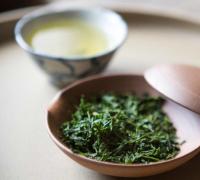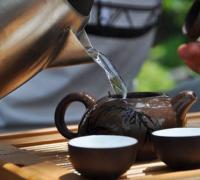Топик "Географическое положение Великобритании" (Geographical position of Great Britain). Топик Climate and Nature of Great Britain
The climate in Great Britain is generally mild and temperate, due to the influence of the Gulf Stream. The southwestern winds carry the warmth and moisture into Britain. The climate in Britain is usually described as cool, temperate and humid. British people say: "Other countries have a climate, in England we have weather."
The weather in Britain changes very quickly. One day may be fine and the next day may be wet. The morning may be warm and the evening may be cool. Therefore it is natural for the people to use the comparison "as changeable as the weather" for a person who often changes his or her mood or opinion about something.
The weather is the favourite topic of conversation in Britain. When two Brits are introduced to each other, if they can"t think of anything else to talk about, they will talk about weather. When two people meet in the street, they will often say something weather-related as they pass, just to show their friendliness.
Every daily paper publishes a weather forecast. Both the radio and television give the weather forecast several times each day. The English also say that they have three variants of weather: when it rains in the morning, when it rains in the afternoon or when in rains all day long. Sometimes it rains so heavily that they say "It"s raining cats and dogs". Rainfall is more or less even throughout the year.
In the mountains there is heavier rainfall then in the plains of the south and east. The driest period is from March to June and the wettest months are from October to January. The average range of temperature (from winter to summer) is from 15 to 23 Celsius degrees above zero. During a normal summer the temperature sometimes rises above 30 degrees in the south. Winter temperatures below 10 degrees are rare. It seldom snows heavily in winter, and frost is rare. January and February are usually the coldest months, and July and August the warmest. Still the wind may bring winter cold in spring, or on summer days. Sometimes it brings whirlwinds or hurricanes. Droughts are rare.
So, we can say that British climate has three main features: it is mild, humid and changeable. That means that it is never too hot nor too cold. Winters are extremely mild. Snow may come but it melts quickly. In winter the cold is a humid cold, not of the dry variety. This humid and mild climate pattern is good for plants. Trees and flowers begin to blossom early in spring.
In British homes there has been no central heating up till recently. The fireplaces are often fired-up, but coal is not used as it"s very expensive, so people use wood instead for fireplaces. Britain doesn"t have any high-grade coal, and has to import it into the country. Many schools and universities don"t have any central heating either, and the floors there are made of stone. The typical British bedroom is especially cold, and sometimes electric blankets or hotwater bottles are used.
Britain was originally a land of vast forests, mainly oak and beech in the Lowlands and pine and birch in the Highlands, with broad stretches of marshland and smaller areas of moors. Over the course of time, much of the forest land was cleared and almost all Lowlands outside the industrial areas were cultivated. Today only about 6 per cent of the total land area remains wooded. Extensive forests remain in eastern and northern Scotland and in southeastern and western England. Oak, elm, ash, and beech are the commonest trees in England, while Scotland has a lot of pine and birch. The Highlands are largely moorland with heather, grasses and shallow soil.
In the cultivated areas that make up most of Britain, there are many wild flowers, flowering plants and grasses. The fauna or animal life of Britain is much like that of northwestern Europe, which the UK used to be a part of. Many larger mammals such as bear and wolf have been hunted to extinction, while others are now protected by law. In addition, there are many foxes. Otters are common along rivers and streams, and seals live along much of the coast. Hedgehogs, hares, rabbits, rats and mice are numerous. Deer live in some of the forests in the Highlands of Scotland and England. Some 230 species of birds live in Britain, and another 200 varieties are regular visitors, many are songbirds. The most numerous are blackbirds, sparrow and starling. Robin Redbreast is the national bird of Britain. The number of ducks, geese and other water fowl has diminished during recent years. There are many threats to both the wildlife and ecological balance around the coast. The biggest threat to the coastline is pollution. Even much-loved Blackpool is not officially safe. More than 3.500 million tons of industrial waste is pumped into the North Sea every year. "We cannot continue to use our seas as a dustbin and expect our coastline to survive," says Greenpeace. Many other ecological problems may be caused by privatization of the coast. Many of the rivers are "biologically dead", and therefore unable to support fish and wildlife.
Топик по английскому языку с переводом на тему Великобритания (Great Britain)
поможет вам рассказать о стране, язык которой вы изучаете. Тема Великобритания (Great Britain) по английскому языку
даст вам общее представление об этой стране о ее географии и основных достопримечательностях.
-----текст-----
Great Britain
The United Kingdom of Great Britain and Northern Ireland is situated on the British Isles. They lie to the north-west of Europe and are separated from the continent by the narrow strait of water. It is called the English Channel. Seas and oceans influence the British climate. It is too cold in winter but never very hot in summer.
The United Kingdom consists of four parts: England, Wales, Scotland and Northern Ireland. England is the central part, it occupies the most of the island of Great Britain. Each part has its capital: the capital of England is London, Scotland has Edinburgh, Wales has Cardiff, and the main city of Northern Ireland is Belfast.
The capital of Great Britain is London; it is the cultural center of the country and is situated on the banks of the Thames. There are s lot of places of interest to visit. The Big Ben, the Tower Bridge over the river Thames, the International London Heathrow Airport, the Westminster Abbey, the National Gallery of Art and many others.
There are about 64 million people living in Great Britain, most of them are English, Irish and Scottish. They all have special traditions for celebrating holidays and cook special food for festivals. All the members of families take part in these events. People in Great Britain are polite and kind.
Great Britain is the state of the future. I dream of going to London and seeing the most wonderful sights of the capital of the United Kingdom and I hope it will come true one day.
-----перевод-----
Великобритания
Объединенное королевство Великобритании и Северной Ирландии расположено на Британских островах. Они лежат на севере Европы и отделены от континента узким проливом. Он называется Английским каналом. На британский климат оказывают влияние моря и океаны. Зимой бывает слишком холодно, но летом никогда не бывает слишком жарко.
Объединенное королевство состоит из 4 частей – Англии, Уэльса, Шотландии и Северной Ирландии. У каждой части своя столица. Столица Англии Лондон, Шотландии – Эдинбург, Уэльса – Кардиф, а главный город Северной Ирландии –Белфаст.
Столица Великобритании – Лондон, это культурный центр страны, и он расположен на берегах Темзы. В нем много достопримечательностей, которые можно посетить – Биг Бен, Тауэрский мост через реку Темзу, Интернациональный аэропорт Хитроу, Вестминстерское Аббатство, Национальная Галерея Искусства и много других.
В Британии живет около 64 миллионов людей, большинство из них англичане, Ирландцы и шотландцы. У всех них особые традиции для праздников, они готовят особую еду для фестивалей. Все члены семьи принимают участие в этих событиях. Люди в Британии вежливы и добры.
Многие известные люди родились в Британии. Один из них Уильям Шекспир, который написал трагедии “Ромео и Джульетта”, “Гамлет”, “Макбет” и много других пьес. Уильям Шекспир Родился в 1564 году и жил в Страдфорде на Эйвоне с женой и детьми. Шекспир умер в 1616 году.
Великобритания считается государством будущего. Я мечтаю о том, чтобы посетить Лондон и полюбоваться сами прекрасными видами столицы Объединенного Королевства и надеюсь, что эта мечта когда-нибудь сбудется.
The climate in Great Britain is generally mild and temperate due to the influence of the Gulf Stream. The south-western winds carry the warmth and moisture into Britain. The climate in Britain is usually described as cool, temperate and humid.
British people say: "Other countries have a climate, in England we have weather."
The weather in Britain changes very quickly. One day may be fine and the next day may be wet. The morning may be warm and the evening may be cool. Therefore it is natural for the people to use the comparison "as changeable as the weather" of a person who often changes his mood or opinion about something. The weather is the favourite topic of conversation in Britain. When two Englishmen are introduced to each other, if they can"t think of any thing else to talk about, they talk about weather. When two people meet in the street they will often say something about weather as they pass, just to show their friendliness.
Every daily paper publishes a weather forecast. Both the radio and television give the weather forecast several times each day.
The English also say that they have three variants of weather: when it rains in the morning, when it rains in the afternoon or when in rains all day long. Sometimes it rains so heavily that they say "It"s raining cats and dogs".
Rainfall is more or less even throughout the year. In the mountains there is heavier rainfall then in the plains of the south and east. The driest period is from March to June and the wettest months are from October to January. The average range of temperature (from winter to summer) is from 15 to 23 degrees above zero. During a normal summer the temperature sometimes rises above 30 degrees in the south. Winter temperatures below 10 degrees are rare. It seldom snows heavily in winter, the frost is rare. January and February are usually the coldest months, July and August the warmest. Still the wind may bring winter cold in spring or summer days. Sometimes it brings the whirlwinds or hurricanes. Droughts are rare.
So, we may say that the British climate has three main features: it is mild, humid and changeable. That means that it is never too hot or too cold. Winters are extremely mild. Snow may come but it melts quickly. In winter the cold is humid cold, not the dry one.
This humid and mild climate is good for plants. The trees and flowers begin to blossom early in spring.
In the British homes there has been no central heating up till recently. The fireplaces are often used. but the coal is not used as it"s very expensive. Britain has no good coal now and imports it itself. Many schools and universities have no central heating either, and the floors there are made of stone. The British bedroom is especially cold, sometimes electric blankets or hotwater bottles are used.
VEGETATION AND WILDLIFE
Britain was originally a land of vast forests. mainly oak and beech in the Lowlands and pine and birch In the Highlands, with great stretches of marshland and smaller areas of moors. In the course of time, much forest land was cleared and almost all Lowlands outside the industrial areas were put under cultivation. Today only about 6 per cent of the total land area remains wooded.
Extensive forests remain in eastern and northern Scotland and in south-eastern and western England. Oak, elm, ash, and beech are the commonest trees in England, while Scotland has much pine and birch. The Highlands with thin soil are largely moorland with heather and grasses. In the cultivated areas that make up most of Britain there are many wild flowers, flowering plants and grasses.
The fauna or animal life of Britain is much like that of north-western Europe, to which it was once joined. Many larger mammals such as bear, wolf have been hunted to extinction, others are now protected by law. There are many foxes. Otters are common along rivers and streams, and seals live along much of the coast. Hedgehogs, hares, rabbits, rats and mice are numerous. Deer live in some of the forests in the Highlands of Scotland and England.
Some 230 kinds of birds live in Britain, and another 200 are regular visitors, many are songbirds. The most numerous are blackbirds, sparrow and starling. Robin Redbreast is the national bird of Britain. The number of ducks, geese and other water fowl has diminished during recent years.
There are many threats to wildlife and ecological balance around the coast. The biggest threat to the coastline is pollution. Even much-loved.
Blackpool is not officially asafe. More than 3.500 million tons of industrial waste is pumped into the North Sea every year. "We cannot continue to use our seas as a dustbin and expect our coastline to survive," says Greenpeace. Many other ecological problems may be caused by privatization of the coast. Many of the rivers are "biologically dead", i.e. unable to support fish and wildlife.
The climate in Great Britain is generally mild and temperate due to the influence of the Gulf Stream. The south-western winds carry the warmth and moisture into Britain. The climate in Britain is usually described as cool, temperate and humid.
British people say: "Other countries have a climate, in England we have weather."
The weather in Britain changes very quickly. One day may be fine and the next day may be wet. The morning may be warm and the evening may be cool. Therefore it is natural for the people to use the comparison "as changeable as the weather" of a person who often changes his mood or opinion about something. The weather is the favourite topic of conversation in Britain. When two Englishmen are introduced to each other, if they can"t think of any thing else to talk about, they talk about weather. When two people meet in the street they will often say something about weather as they pass, just to show their friendliness.
Every daily paper publishes a weather forecast. Both the radio and television give the weather forecast several times each day.
The English also say that they have three variants of weather: when it rains in the morning, when it rains in the afternoon or when in rains all day long. Sometimes it rains so heavily that they say "It"s raining cats and dogs".
Rainfall is more or less even throughout the year. In the mountains there is heavier rainfall then in the plains of the south and east. The driest period is from March to June and the wettest months are from October to January. The average range of temperature (from winter to summer) is from 15 to 23 degrees above zero. During a normal summer the temperature sometimes rises above 30 degrees in the south. Winter temperatures below 10 degrees are rare. It seldom snows heavily in winter, the frost is rare. January and February are usually the coldest months, July and August the warmest. Still the wind may bring winter cold in spring or summer days. Sometimes it brings the whirlwinds or hurricanes. Droughts are rare.
So, we may say that the British climate has three main features: it is mild, humid and changeable. That means that it is never too hot or too cold. Winters are extremely mild. Snow may come but it melts quickly. In winter the cold is humid cold, not the dry one.
This humid and mild climate is good for plants. The trees and flowers begin to blossom early in spring.
In the British homes there has been no central heating up till recently. The fireplaces are often used. but the coal is not used as it"s very expensive. Britain has no good coal now and imports it itself. Many schools and universities have no central heating either, and the floors there are made of stone. The British bedroom is especially cold, sometimes electric blankets or hotwater bottles are used.
Вы видели эти удивительные живые изгороди и цветочные клумбы, которые так популярны в Великобритании? Природа Англии отличается особой красотой и атмосферой. Посмотрите на фото, и вы почувствуете, насколько она прекрасна. Сегодня я подготовила для вас только самые интересные факты и самые красивые картинки этой удивительно красивой страны.
Климат и рельеф
Климат в Великобритании переменчивый. Самое красивое время года - весна. Сотни туристов приезжают посмотреть на рододендроны и цветение тюльпанов. Именно в этот период в стране проходит большинство выходных, хотя в целом их не так уж и много.
Лето характеризуется значительными муссонами и дождями. Но жители в этот период уезжают за город, а крупные города заполняют туристы. Осень не такая яркая, как в России. Вся страна покрывается туманами и сыростью.
Зима больше напоминает русскую осень. Температура редко опускается ниже нуля, а мороз - понятие редкое. Поэтому англичане даже не знают, что такое подледная рыбалка или даже катание на коньках на озере. А если выпадает снег хоть на пару сантиметров, вся страна останавливается: ничего не работает, транспорт стоит, люди в шоке.
Рельеф страны наполовину равнинный, с некоторой холмистостью и возвышенностями. Ближе к северу страны он становится немного гористым. Есть небольшие горы до 1,3 километров.
Реки и озера
Самое крупное озеро страны - Лох-Несс. Другие крупные по площади находятся в Шотландии и Ирландии. В Англии и Уэльсе есть несколько озер. Безумной красотой отличается озеро Бала в Уэльсе, а также Уиндермир в Англии.
А вот если вы думаете, что Темза - единственная красивая река в Великобритании - значит, вы еще не видели реку Северн. Особенно прекрасен ее вид с самолета. В стране также есть небольшие реки, которые находятся прямо в городах и придают им особую атмосферу.
Флора и фауна.
Раньше лесистость страны была намного выше, но с развитием лесохозяйственных освоений остается все меньше и меньше oaks и берез. Старинные - можно даже сказать древние, - дубы охраняются законом и сохраняются в старинных лесах.
Животный мир Великобритании представлен в основном енотами, лисами, выдрами. Они живут там, где меньше всего людей. В стране много зайцев и кроликов. Есть много амфибий: тритоны и лягушки. Насчитывается порядка 200 видов птиц. Реки страны полны лосося, форели, окуня и хариуса. Но с ежегодным загрязнением рек и озер их численность с каждый годом сокращается.
Заповедники и охрана природы.
После 1945 правительство поощряет сохранность государственных и частных лесополос. На территории страны насчитывается более 130 заповедников, на территории которых создавали научные центры по охране природы. Сейчас деятельность правительства направлена на то, чтобы создать в обществе понимание необходимости защиты environment , а также повышать населения для достижения этой цели.
Чтобы вы не заскучали, я подготовила на эту тему для вас топик на английском языке с переводом.
Давайте совместим полезное и интересное.
Great Britain is an extremely beautiful country. Every year hundreds of tourists arrive there to observe the beauty of tulips and rhododendrons. The country is very beautiful in spring. And summer is very rainy. If people are lucky enough, there will have a couple of sunny days. Autumn is very foggy and windy.
The average temperature in winter hardly ever goes below the level of 0. And also people there hardly ever see snow. If there is even a little of it, the whole country stops working.
One of the main things to see there- are the rivers and lakes of the country. The Loch Ness Lake and the river Severn are “must-see” for everyone. Their beauty is breathtaking.
So whenever you visit Great Britain - be sure to see not only Big Ben or some castles, but also get to know its amazing nature.
Великобритания-страна удивительной красоты. Каждый год сотни туристов приезжают сюда, чтобы увидеть красоту тюльпанов и рододендронов. Страна очень красивая весной. А лето очень дождливое. Если повезет, бывает и пара солнечных дней. Осенью там очень туманно и ветрено.
Средняя температура зимой почти никогда не опускается ниже уровня 0. И люди там почти никогда не видят снега. Если выпадает хоть немного, вся страна перестает работать.
Одними из главных природных красот, которые нужно увидеть там - это реки и озера страны. Озеро Лох-Несс и река Северн обязательны для просмотра каждого. Их красота захватывает дух.
Поэтому всякий раз, когда вы посещаете Великобританию - посмотрите не только Биг-Бен или несколько замков, но и познакомьтесь с ее удивительной природой.
Полезные фразы:
to observe the beauty of - наблюдать красоту (чего-либо)
to be rainy - быть дождливым
to be lucky enough - быть достаточно удачливым
the beauty is breathtaking - завораживающая красота
the average temperature - средняя температура
hardly ever - едва ли когда-либо (видел/касался)
to get to know - узнать
Уверена, что вы уже загорелись желанием поехать поскорее и самим посмотреть всю эту красоту. Но не торопитесь! Вам еще многое предстоит узнать. Чтобы максимально подготовиться к поездке - подписывайтесь на рассылку моего блога. Я позабочусь, чтобы вы отправлялись в путь с полным багажом знаний и горящими глазами.
А на сегодня я прощаюсь.












